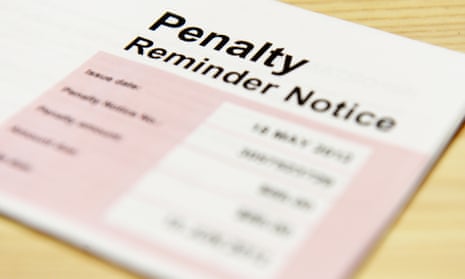The New South Wales government’s debt collection agency broke the law when it used an automated system to withdraw money from millions of bank accounts to claw back unpaid fines, a scathing report has found.
The NSW ombudsman Paul Miller’s report, released on Tuesday, found Revenue NSW’s use of AI to generate garnishee orders broke the law from its introduction in 2016 until 2019, and that it was “wrong” until March 2022.
A garnishee order is when Revenue NSW takes money directly out of people’s bank accounts if they have defaulted on their debt repayments, and have not responded to repeated debt recovery notices.
Revenue NSW does not have to go to court to issue a garnishee order. Since 2016, the agency has used machine learning technology to assist it to generate high volumes of garnishee orders each day.
The ombudsman started investigating the scheme in 2016 after its introduction prompted a large number of complaints.
An earlier report, released in 2021, found Revenue NSW had unlawfully used the system to recover fines from financially vulnerable people, in some cases draining bank accounts and leaving people unable to buy food.
While in opposition, NSW Labor had labelled the scheme “Robodebt 2.0”. The then-Coalition government rejected those comparisons.
In its report released on Tuesday, the ombudsman found Revenue NSW engaged in “maladministration”.
Revenue NSW has obtained advice from the solicitor general confirming the version of the system that has been in place since May 2022 is lawful.
But the ombudsman found the agency broke the law with the garnishee order system it had in place from January 2016 to March 2019.
Despite undergoing some changes, the scheme was “wrong” between March 2019 to March 2022 because it did not provide decision-makers with clear reasoning and evidence, or clearly and fully record those decisions.
after newsletter promotion
Among the ombudsman’s recommendations is for Revenue NSW to provide better information to people who owe debts, including publishing on its website how they may be challenged.
Revenue NSW should also include instructions in its garnishee orders reminding banks not to recover any Centrelink “saved amounts”, and introduce safeguards to ensure “protected amounts” are left in people’s banks accounts after garnishee action.
The agency has applied a “protected amounts” policy since March 2019, meaning the minimum amount it must leave in someone’s bank account after garnishee action. The current minimum protected amount is $587.50.
The finance minister, Courtney Houssos, said the government was committed to implementing the ombudsman’s recommendations in full and had “already begun that work”.
“While garnishee orders can be an important tool of last resort to recover fines and state debts, it is crucial they are implemented in a fair and equitable way,” she said.
